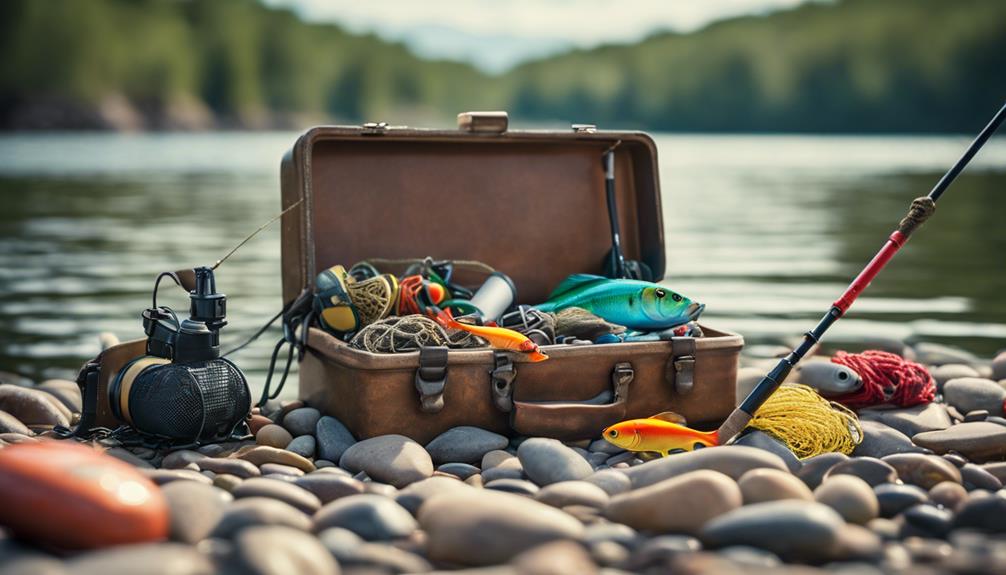Understanding Bass Fishing Flies: What Are They?
Bass fishing flies are specialized lures designed to attract bass in freshwater environments. Unlike traditional bait, these flies are lightweight and often handcrafted to mimic the appearance and movement of various aquatic creatures, such as insects, minnows, or even small amphibians. The art of fly fishing for bass has gained popularity among anglers due to its engaging nature and the challenge it presents. To successfully catch bass using flies, it’s essential to understand the different patterns and techniques that can maximize your chances of landing that trophy fish.
The Best Bass Fishing Fly Patterns for Success
When it comes to bass fishing flies, the patterns you choose can make a significant difference in your success rate. Some of the most effective fly patterns include the Clouser Minnow, Woolly Bugger, and Popper. Each of these flies has its unique action and appeal, attracting bass in different conditions. For instance, the Clouser Minnow simulates a baitfish and is perfect for deeper waters, while the Woolly Bugger can imitate both fish and insects, making it versatile for various environments. Poppers, on the other hand, create surface disturbance, drawing attention from bass lurking below. Understanding when and where to use each pattern is crucial for a successful day on the water.
Choosing the Right Gear for Fly Fishing Bass
Selecting the appropriate gear is vital for effective bass fishing with flies. A 5 to 8-weight fly rod is typically ideal for bass, providing the perfect balance of sensitivity and strength. Additionally, a matching fly reel with a smooth drag system is essential for battling larger fish. Don’t forget your fly line; a weight-forward floating line is often recommended for beginners, as it allows for easier casting and better control. Lastly, invest in a good selection of bass fishing flies in various colors and sizes to ensure you’re prepared for changing conditions.
Techniques for Effective Bass Fishing with Flies
There are several techniques to enhance your bass fishing experience using flies. One effective method is the “strip retrieve,” where you strip the line in short bursts, simulating the movement of a fleeing baitfish. This technique works exceptionally well with patterns like the Clouser Minnow. Another popular method is the “dead drift,” which involves allowing the fly to drift naturally with the current, mimicking the behavior of insects or other prey. Depending on the water conditions and the time of year, experimenting with different retrieves can lead to increased success and more fish on your line.
Seasonal Considerations for Bass Fishing Flies
Bass behavior changes with the seasons, impacting the effectiveness of different fishing flies. During spring, as water temperatures rise, bass become more active and aggressive, making it an ideal time to use larger, more vibrant flies. In summer, when the sun is high, bass often seek shade, so using flies that mimic smaller prey can be effective. Fall presents a unique opportunity as bass fatten up for winter; using larger flies that resemble baitfish can yield excellent results. In winter, bass become less active, but using slow-moving flies can entice them to bite. Understanding seasonal patterns is key to maximizing your success with bass fishing flies.
Where to Find Bass for Fly Fishing
Identifying the right locations for bass fishing is crucial for success. Look for areas with ample cover, such as submerged rocks, fallen trees, and weed beds, as bass often hide in these spots to ambush prey. Shallow flats and coves are also prime locations, particularly during the warmer months when bass move in to spawn. Additionally, consider fishing near drop-offs and ledges where baitfish congregate. Knowing where to cast your line based on the time of year and the habitat is essential for effective bass fishing with flies.
Common Mistakes to Avoid When Using Bass Fishing Flies
Even seasoned anglers can make mistakes when fishing for bass with flies. One common error is using the wrong fly pattern for the conditions. Always observe local forage and choose flies that closely resemble the natural food sources in the area. Another mistake is casting too aggressively, which can spook bass. Instead, practice a gentle presentation to avoid disturbing the water too much. Lastly, failing to change flies when they aren’t producing can lead to missed opportunities. Stay adaptable and willing to switch tactics to improve your chances of catching bass.
Conclusion: Mastering the Art of Bass Fishing Flies
In conclusion, mastering the art of bass fishing flies requires understanding the patterns, gear, techniques, and seasonal behaviors of bass. By selecting the right flies and employing effective fishing methods, you can enhance your angling experience and increase your chances of landing that elusive trophy bass. Remember to stay patient and observant while on the water, as these qualities can lead to successful fishing days. With practice and dedication, you’ll become proficient in using bass fishing flies, making your fishing adventures all the more rewarding. Happy fishing!
